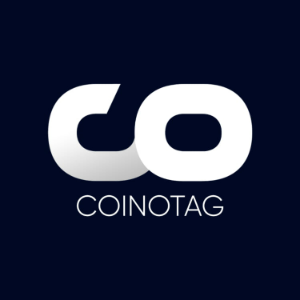Solana Roadmap: Unveiling a Revolutionary Vision for Internet Capital Markets by 2027
7 min read
BitcoinWorld Solana Roadmap: Unveiling a Revolutionary Vision for Internet Capital Markets by 2027 The digital finance landscape is constantly evolving, with blockchain technology at its forefront. Among the many innovators, Solana has consistently pushed the boundaries of speed and scalability. Now, the Solana Foundation has revealed its ambitious 2027 Solana roadmap , a strategic plan to establish Solana as the fundamental layer for global internet capital markets (ICMs). This vision is not just about faster transactions; it’s about fundamentally transforming how financial markets operate, making them more accessible, efficient, and transparent for everyone. What Does the Solana Roadmap Mean for Internet Capital Markets? The core of Solana’s 2027 vision is to become the infrastructure upon which the next generation of financial markets will be built. Imagine a world where assets can be tokenized, traded, and settled almost instantly, across borders, with minimal fees and maximum transparency. This is the promise of internet capital markets, and Solana aims to be the backbone of this revolution. To achieve this, the Solana roadmap identifies several critical areas for development, with a particular focus on addressing the complexities of market microstructure. This refers to the intricate details of how markets operate, including how orders are placed, matched, and executed. In traditional finance, market microstructure is incredibly complex and often opaque. Solana aims to bring blockchain’s inherent transparency and efficiency to this crucial aspect. Tackling the Core Challenge: Market Microstructure on Solana Market microstructure is perhaps the most critical challenge for any blockchain aspiring to host high-frequency, high-value financial transactions. It involves: Order Matching: How buy and sell orders are paired. Price Discovery: How the true value of an asset is determined. Transaction Ordering: The sequence in which transactions are processed. In traditional markets, sophisticated systems handle these processes. On a blockchain, the challenge is to replicate this efficiency while maintaining decentralization and security. The Solana roadmap specifically highlights transaction ordering as a key hurdle. Improper ordering can lead to issues like Maximal Extractable Value (MEV), where validators can front-run or sandwich transactions to extract profit, potentially harming market fairness. Revolutionary Tools: ACE, Jito BAM, and DoubleZero Fueling the Solana Roadmap To overcome these challenges and truly enable internet capital markets, Solana is rolling out several groundbreaking innovations: Application-Controlled Execution (ACE): Empowering Smart Contracts One of the most significant introductions in the Solana roadmap is Application-Controlled Execution (ACE). This feature is designed to give smart contracts greater control over the ordering of transactions. Why is this important? In a high-speed trading environment, the exact sequence of transactions can significantly impact outcomes and prevent malicious activities like MEV. ACE allows applications to specify precise ordering requirements, ensuring fairness and predictability, which are vital for robust financial markets. Jito’s Block Assembly Marketplace (BAM): Optimizing Block Production Coming within weeks, Jito’s Block Assembly Marketplace (BAM) is another pivotal component of the Solana roadmap . BAM introduces a new paradigm for how blocks are constructed on the Solana network. It creates a marketplace where searchers (those looking for MEV opportunities) can bid for transaction inclusion and ordering, with the proceeds going to validators and ultimately, stakers. This mechanism aims to: Democratize MEV: By making it transparent and accessible, reducing the advantage of sophisticated actors. Improve Efficiency: By incentivizing optimal block construction. Enhance Network Health: By providing additional revenue streams for validators, strengthening network security. BAM is crucial for creating a more efficient and equitable environment for financial applications on Solana. DoubleZero: The Fiber Backbone for Solana Transactions By mid-September, the full rollout of DoubleZero is expected. This isn’t just a software upgrade; it’s a peer-to-peer fiber network specifically designed for Solana transactions. The significance of DoubleZero cannot be overstated for the Solana roadmap ‘s capital markets ambitions. In financial trading, latency (the time delay in data transmission) is measured in microseconds. A dedicated fiber network drastically reduces this latency, providing a direct, high-speed conduit for transactions. This physical layer improvement is essential for supporting the ultra-low latency requirements of institutional-grade trading and complex financial operations. Scaling Up: Solana’s Throughput Journey and the 2027 Vision Beyond these specific innovations, Solana continues to relentlessly pursue higher throughput. Cointelegraph reported a recent upgrade that boosted Solana’s block capacity by 20%. This is just one step in a continuous effort to enhance the network’s ability to handle an immense volume of transactions. Further throughput improvements are planned through 2025. This relentless focus on scalability is foundational to the Solana roadmap , as internet capital markets will demand an unparalleled transaction processing capability, far exceeding what most current blockchains can offer. The Promise of Internet Capital Markets on Solana Why is Solana so committed to becoming the hub for internet capital markets? The benefits are transformative: Unprecedented Speed and Efficiency: Near-instant settlement and low transaction costs eliminate many inefficiencies of traditional finance. Global Accessibility: Anyone with an internet connection can participate, democratizing access to financial services. Programmability: Smart contracts enable complex financial instruments, automated compliance, and innovative new products not possible in traditional systems. Transparency and Auditability: Blockchain’s immutable ledger provides unparalleled transparency, reducing fraud and increasing trust. Imagine a world where tokenized stocks, bonds, derivatives, and even real estate can be traded seamlessly on a global, permissionless network. This is the future the Solana roadmap is building. Navigating the Path: Challenges and Opportunities for the Solana Roadmap While the vision is compelling, the journey to establishing Solana as the foundation for internet capital markets is not without its challenges. These include: Regulatory Clarity: The evolving regulatory landscape for digital assets needs to provide clear guidelines for institutions to participate. Institutional Adoption: Convincing large financial institutions to migrate from established systems requires robust security, reliability, and compliance frameworks. User Education: Bridging the knowledge gap between traditional finance professionals and blockchain technology is crucial. Network Stability: Ensuring consistent uptime and resilience under extreme load is paramount for financial applications. However, each challenge also presents an opportunity for Solana to demonstrate its capabilities and build trust within the broader financial ecosystem. The proactive approach outlined in the Solana roadmap indicates a clear understanding of these hurdles. What This Means for You: Actionable Insights from the Solana Roadmap For developers, the Solana roadmap signals a fertile ground for building next-generation financial applications. For investors, it highlights Solana’s long-term potential as a critical infrastructure layer. For financial institutions, it presents an invitation to explore a more efficient, transparent, and globally connected future. Understanding these developments is key to staying ahead in the rapidly evolving world of digital finance. A Glimpse into the Future: Solana’s Enduring Impact The 2027 Solana roadmap is more than just a technical plan; it’s a declaration of intent to redefine global finance. By focusing on critical challenges like market microstructure and investing in groundbreaking solutions like ACE, Jito BAM, and DoubleZero, Solana is positioning itself at the forefront of the internet capital markets revolution. The coming years will undoubtedly showcase whether this ambitious vision can truly transform how the world trades and invests, making financial markets faster, fairer, and more accessible for everyone. Frequently Asked Questions (FAQs) 1. What are Internet Capital Markets (ICMs) in the context of Solana’s roadmap? Internet Capital Markets (ICMs) refer to a vision where traditional financial markets (like stock exchanges, bond markets, and derivatives markets) are built upon blockchain technology, specifically Solana. This aims to leverage blockchain’s benefits such as speed, transparency, global accessibility, and programmability to create more efficient and equitable financial systems. 2. Why is market microstructure a critical challenge for Solana’s 2027 roadmap? Market microstructure involves the detailed mechanisms of how financial markets operate, including transaction ordering and price discovery. For high-speed, high-value financial transactions, precise and fair transaction ordering is crucial. Solana’s roadmap addresses this to prevent issues like MEV (Maximal Extractable Value) and ensure the integrity and efficiency required for institutional-grade capital markets. 3. How does Application-Controlled Execution (ACE) contribute to the Solana roadmap? Application-Controlled Execution (ACE) is a new feature that gives smart contracts more granular control over the ordering of transactions. This helps in preventing front-running and other forms of MEV, ensuring predictable and fair execution of trades. It’s a vital component for building robust and trustworthy financial applications on Solana. 4. What is Jito’s Block Assembly Marketplace (BAM) and when will it launch? Jito’s Block Assembly Marketplace (BAM) is a system designed to optimize block production on Solana by creating a transparent marketplace for transaction inclusion and ordering. It allows searchers to bid for MEV opportunities, with proceeds going to validators and stakers. This mechanism aims to improve efficiency and democratize MEV. It is expected to launch within weeks. 5. What is DoubleZero and how does it support Solana’s capital markets vision? DoubleZero is a peer-to-peer fiber network specifically for Solana transactions, expected to be fully rolled out by mid-September. Its purpose is to drastically reduce latency (transaction delay), providing the ultra-low latency environment necessary for high-frequency trading and complex institutional financial operations within internet capital markets. 6. What are the key benefits of building internet capital markets on Solana? Building ICMs on Solana offers numerous benefits, including unprecedented speed and efficiency with near-instant settlement and low costs, global accessibility for anyone with an internet connection, enhanced programmability through smart contracts for innovative financial products, and superior transparency and auditability due to blockchain’s immutable ledger. If you found this article insightful, consider sharing it with your network! Help us spread the word about Solana’s groundbreaking advancements in the world of decentralized finance and internet capital markets. Your shares help us reach more enthusiasts and professionals alike! To learn more about the latest explore our article on key developments shaping Solana’s future in the digital asset space. This post Solana Roadmap: Unveiling a Revolutionary Vision for Internet Capital Markets by 2027 first appeared on BitcoinWorld and is written by Editorial Team

Source: Bitcoin World



